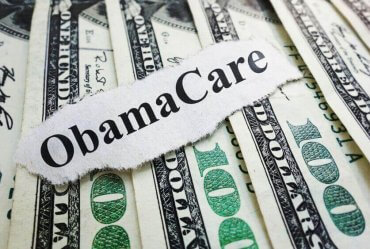
You’re shopping for health insurance with the goal of getting the best coverage you can afford. Your life doesn’t include too many risky behaviors and you consider yourself relatively healthy. The most you’re worried about is a minor illness or accident. You don’t mind paying a bit more every month in case something small goes wrong. Under these circumstances, a plan with a low deductible might be the perfect fit for you.
Despite the great coverage these plans offer, a lot of people avoid low deductibles. You’re required to pay a higher monthly payment, which can be an unrealistic expense for some consumers.
However, low deductibles offer many benefits – and challenges – which you should carefully consider before you apply for health insurance. To help you decide what works for you, we’ve created a list of low deductible pros and cons. Read on to learn more.
What is a Low Deductible Health Plan?
A low deductible health plan means the policyholder will pay less upfront and out of pocket for certain healthcare items, such as surgery. Most policies outline certain services the insured may access whether their deductible is met or not, such as a visit to the primary care doctor. Other medical costs, such as a visit to urgent care or certain lab services, may be dependent on the deductible being met before the insurance company will kick in to help pay for them.
At any rate, those with a low deductible will have less of a threshold to meet before the insurer begins kicking in.
Case Study Widget: Meet Sarah, a 35-year-old woman with multiple chronic illnesses. Thanks to her low deductible health insurance plan, she was able to manage her medical costs effectively and receive the necessary treatments without breaking the bank.
Pros of Low Deductible Health Insurance
The immediate pros of a low deductible plan include a lower cost if you need to access healthcare services more frequently or if you have a true – and expensive – emergency or catastrophic illness or injury. Older people and those with a medical history that includes chronic conditions or chronic illness may find a better choice in choosing a plan with a low deductible. Other examples include:
- Women who are pregnant or plan to get pregnant
- Those who take a variety of prescriptions or specialized treatments, such as dialysis
- Anyone who is planning a surgical procedure in the coming 12 months
A low deductible is the best option if you need to access more expensive treatments and multiple doctor visits more cheaply.
Cons of Low Deductible Health Insurance
Plans with low deductibles are more expensive in monthly bills. In exchange for that bigger premium, your insurance company agrees to cover a greater percentage of your financial loss after an accident or major illness. However, that monthly premium can be tough to keep paying.
Plans with low deductibles also can seem wasteful if you don’t get sick, injured, or experience an accident.
Maybe you purchased it because you thought you might need regular care from a medical professional. Your ailment heals, a fantastic turn of events. Now you don’t have any medical needs, but you’re stuck paying a huge monthly premium. This ongoing expense is the major reason many people avoid plans with low deductibles.
Quote Widget: “Dr. Jane Smith, a healthcare expert, states that low deductible health insurance is a great option for individuals who require frequent medical care or have chronic conditions, as it provides a more affordable way to access necessary treatments.”
What’s the Difference Between High and Low Deductibles?
A deductible is the amount you pay before your insurance policy kicks in to help pay for a covered event. Typically, a higher deductible health plan equals a lower monthly premium, which is why some people find a high-deductible health plan (HDHP) more attractive. However, studies indicate people with an HDHP tend to skip their health care – even the free medical care, such as preventive services like mammograms.
Those who choose a low-deductible plan may see a higher monthly premium. This is because an insurer will need to kick in more in the event of covered medical services. Many depend on their current financial situation when they choose how much to spend out of pocket (for their deductible) during a plan year.
The main difference between a high-deductible plan and a low deductible plan is figuring out how to handle out-of-pocket expenses. For many, the less out-of-pocket costs the better. With a HDHP, your immediate pocket costs may be lower, while the long-term costs if you need expensive medical care will be higher. With a low deductible, your monthly premium may be higher, but your more expensive health services will cost you less in the long run.
So, it’s a balancing act for many families.
What is the Difference Between an Out-of-Pocket Maximum and a Deductible?
Many people are confused by exactly how much you have to pay for your care. A maximum pocket cost is the total cost you will have to pay in one calendar year for your medical care. The federal government sets limits on each coming year on how much Americans will have to pay themselves if they have a health insurance policy. The maximum for 2023 is $9,100 for individuals and $18,200 for families.
A deductible is the amount you pay before your insurance kicks in to pay the rest.
What are Out-of-Pocket Costs?
Basically, anything that you as the policyholder must come up with from your own money. These costs cover a wide variety of things and it’s always important to read carefully any information you receive on what you will be expected to contribute aside from your deductible. Here are some examples of pocket costs:
- Monthly premium – This is the amount you are charged for your health coverage. In most cases, it’s a set monthly charge, although some prefer to pay upfront for the whole year or every 6 months.
- Coinsurance – After you’ve met your deductible, you’ll most likely still be responsible for splitting the costs of your care with your insurer. You may be familiar with a common split – 80/20. What this means is that your insurer will pay 80% of the costs associated with covered care and you’ll pay 20%.
- Copayment – A copayment is the set amount you pay for office visits, etc. In most cases, this cost stays the same throughout the year, i.e., a singular flat fee to visit your primary care doctor.
- Prescription drugs – You may need to pay a certain amount for different types of prescription drugs.
Tips for Lowering Out-of-Pocket Costs
Just as with saving money on car insurance, there are ways to save money on your out-of-pocket healthcare costs. Let’s take a look at a few suggestions and tips.
- Choose generic prescriptions. Your healthcare provider may not always write a prescription for a generic version, so you should ask the pharmacist when you fill your script if that’s available for you. Generic drugs have the same active ingredients, but they may cost up to 85% less than brand-name drugs. That’s a lot of money in your pocket!
- Check your prescription discount card. Ask your pharmacy if there is a discount card for your prescription if the cost from your insurance company is too high. In some cases, using a discount card rather than your insurance may provide some savings.
- Choose in-network providers. Your insurance company has a contract with in-network providers that spells out how much that provider will charge for services and how much the insurer will pay. This is why it is beneficial to you to use in-network providers if possible.
- Use urgent care over the emergency room when possible. You’ll most likely pay less for a visit to the urgent care clinic than for the emergency room. If it’s not a life-or-death situation or a true emergency, you’ll not only save money with urgent care, but you’ll also most likely be in and out a lot faster.
- Use telehealth if it’s available. Many health plans now have a telehealth option where you can stay in the comfort of your home and speak to a provider over the phone or on a computer or laptop. These practitioners can prescribe medications for you, as well.
These are ways you can make the most of your health insurance while still saving money.
Different Types of Policies
Healthcare can be a confusing maze of options and choices. Many find it hard to pick a healthcare plan that will take care of them and their families at the highest level without costing too much. The fact you cannot change your plan choice for 12 months in most cases is another scary aspect. What if you choose the wrong one? Let’s take a look at some of the different policy types and how they work with high and low deductibles.
Note: Many plans do not automatically include dental care or vision. Before selecting a policy, look carefully at what is included and what is not. You should be able to question the insurance company to determine if the policy meets your needs.
Health Maintenance Organization (HMO)
An HMO has distinct advantages and disadvantages.
Advantages include:
- Low premiums
- Low deductibles
Disadvantages include:
- Requires you to use certain doctors, hospitals and other health-care professionals in order to receive the cost savings. If you’ve been using a certain doctor for a long time and they are not contracted as part of the HMO, you may see that as a disadvantage.
Preferred Provider Organization (PPO)
A PPO plan typically offers a lower out-of-pocket price tag than a HDHP but it’s higher than an HMO. You’ll have more freedom to choose which providers you visit, but your monthly premiums could be higher. You also won’t need a primary care physician to approve visits to specialists, which some people think is a good idea, but you can still save money by using in-network doctors.
Health Savings Account (HSA)
An HSA is a tax-exempt savings account that can be used to pay for certain health care services and products and is specifically designed for those enrolled in a HDHP. In fact, only members of a HDHP can use an HSA. It is to be used for approved out-of-pocket medical expenses and there can be tax penalties if the money is used in the wrong way. There are many benefits to having HSA funds, including tax-free earnings and the ability to roll any unspent money over to the next year.
Affordable Care Act (ACA)
Although the ACA is not a type of policy per se, many more people these days purchase their health plans through an ACA marketplace administered by the federal government or state-run exchanges. The ACA offers many types of traditional plans at various levels that people qualify for based on their income. When it comes to choosing a high deductible or low deductible, the same principles apply – a lower deductible equals a higher cost for a covered event. People sign up for ACA policies during Open Enrollment, which typically runs from late fall to December or January.
Employer-Based
Many U.S. citizens receive their health coverage from an employer-sponsored plan. In fact, almost half of the population gets their coverage that way. Employers know that offering this type of benefit will help them attract top talent for their open positions. Aside from that, the passing of the ACA in 2010 made it a law that employers with more than 50 full time employees must offer health insurance.
These plans can be contributory (employee kicks in) or non-contributory (employer bears all the cost). Benefits to these types of plans include healthier employees and tax incentives for businesses. Some disadvantages include being tied to a job you no longer like so you don’t lose your benefits, as well as not having control over the types of coverage offered.
Get Help Finding the Right Low-Deductible Health Insurance with Freeway
At Freeway Insurance, we understand that navigating the world of health insurance can be daunting. Reach out to our dedicated customer service team at (800) 777-5620 or connect with us online to get personalized assistance in finding the right health insurance plan for you.
Ready to Get a Quick Quote?
If a low deductible plan sounds like the perfect fit for you and your family, let us get you a quick quote. It’s fast and easy – and best of all, it’s free. We have caring and bilingual agents standing by to explain everything you need to know.



